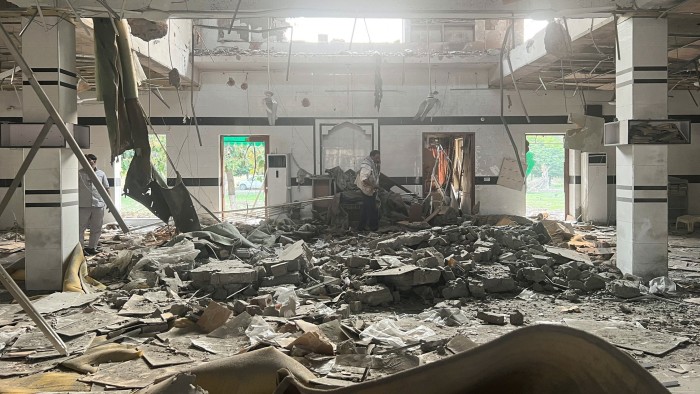Unlock the Editor’s Digest for free
Roula Khalaf, Editor of the FT, selects her favourite stories in this weekly newsletter.
The writer is former head of Citigroup’s emerging markets investments and author of ‘The Gathering Storm’
India’s missile strikes against Pakistan this week have significantly escalated tensions with its nuclear-armed neighbour, marking the deepest incursion into Pakistan’s undisputed territory since the Indo-Pakistani war of 1971. Pakistani Prime Minister Shehbaz Sharif described the attack as “an act of war,” as Islamabad vowed to retaliate.
The conflict was triggered by an April terror attack in Indian-administered Kashmir, which killed 26 civilians and drew international concern. Donald Trump has described the situation as “a shame” and expressed hope for a swift resolution, remarking that “they have been fighting for a long time, for many, many decades.”
For Pakistan, the economic fallout from another prolonged conflict would be significantly more severe than for India, making any continued escalation especially perilous. Moody’s Investors Service warned about the dangers on May 5. “Tensions with India would likely weigh on Pakistan’s growth and hamper fiscal consolidation, setting back macroeconomic stability,” the agency stated. Pakistan’s economy, showing tentative recovery under a $7bn IMF programme, could collapse.
Historically, such conflicts have destabilised Pakistan. The war in Afghanistan had a devastating impact, contributing to the rise of sectarian violence, the proliferation of weapons and drugs, and the rise of extremist groups that challenge the state’s authority.
Today, its economy remains highly vulnerable. As of December 2024, Pakistan’s external debt had surpassed $131bn, while its foreign-exchange reserves of around $10bn covered barely three months of imports. Any further military escalation could jeopardise access to foreign capital markets and bilateral financing, compounding repayment challenges and straining reserves. The IMF programme itself could be thrown off course by heightened geopolitical risk.
In 2021, Pakistan’s former Army Chief General Qamar Javed Bajwa warned journalists that the country lacked sufficient diesel to power its tanks and even the funds to operate them — a vulnerability that persists.
India, in contrast, is in a markedly stronger position. Bilateral trade between the two remains negligible, accounting for less than 0.5 per cent of India’s total exports in 2024. Even in a protracted stand-off, India’s economic activity would face minimal disruption.
There may be indirect costs for New Delhi — a sharp rise in defence spending could slow its fiscal consolidation, diverting resources from development priorities. Increased military expenditures could also impede infrastructure expansion and reduce allocations for social programmes. India also faces security pressures on multiple fronts, particularly along contested borders with China. A two-front security posture imposes costs that, while manageable, warrant strategic caution when it comes to what happens next.
Yet India’s situation pales in comparison to the existential economic risks confronting Pakistan. For Islamabad, military engagement might offer a temporary political rallying point amid domestic unrest, but the economic damage would be lasting. Already leaning on Chinese support — Beijing recently rolled over $2bn in debt — Pakistan risks deeper dependence on China, complicating its relations with western allies, particularly the US.
Pakistan’s real economy, particularly agriculture, would also suffer. India’s suspension of the 1960 Indus Waters Treaty sends a destabilising signal. Agriculture remains the backbone of Pakistan’s economy, employing nearly 40 per cent of its labour force. Combined with ongoing political instability and the lingering effects of the 2022 floods, the country is ill-prepared for another major shock. A single crisis could trigger economic collapse and mass suffering. For Islamabad, avoiding significant escalation could be a question of survival.
Swift international action is now essential to defuse rising tensions between India and Pakistan — failure to do so will not only unleash broader geopolitical instability but also imperil the livelihoods of millions in one of the world’s poorest regions (the two countries together encompass a sizeable proportion of the global population subsisting on less than $3.65 per day.)
Even if a full-scale war appears unlikely, the potential for limited hostilities — frequent in the fraught history of this rivalry — remains high. And shortlived escalations can still impose outsize economic and human costs, particularly on a country as vulnerable as Pakistan.
Source link









